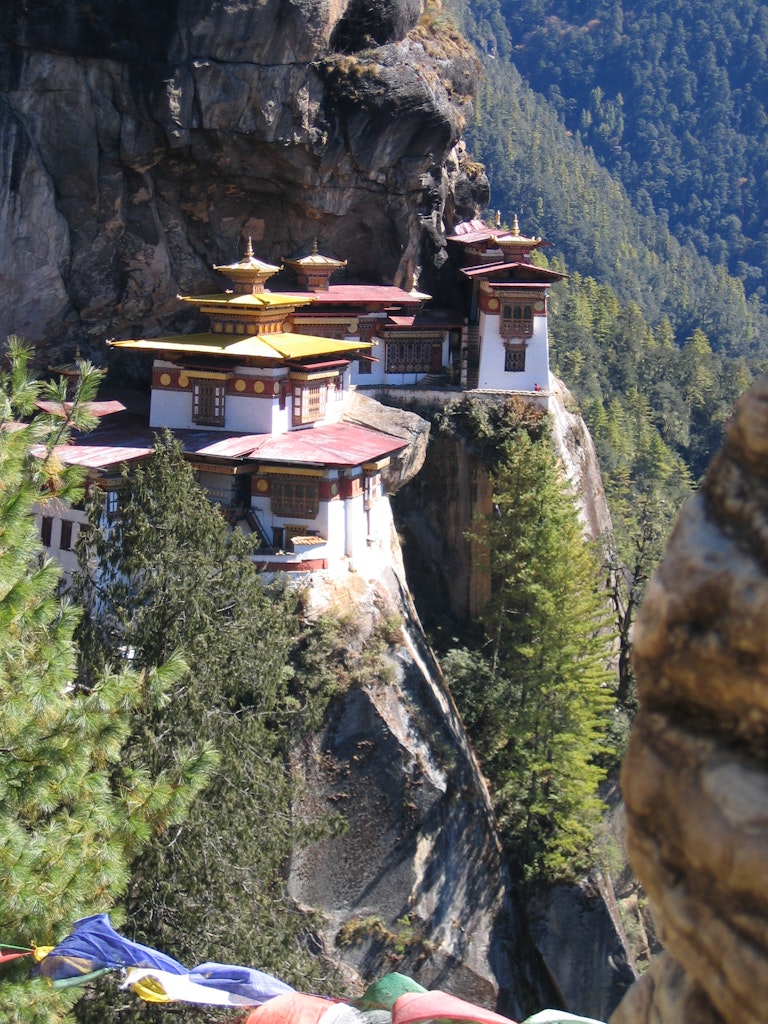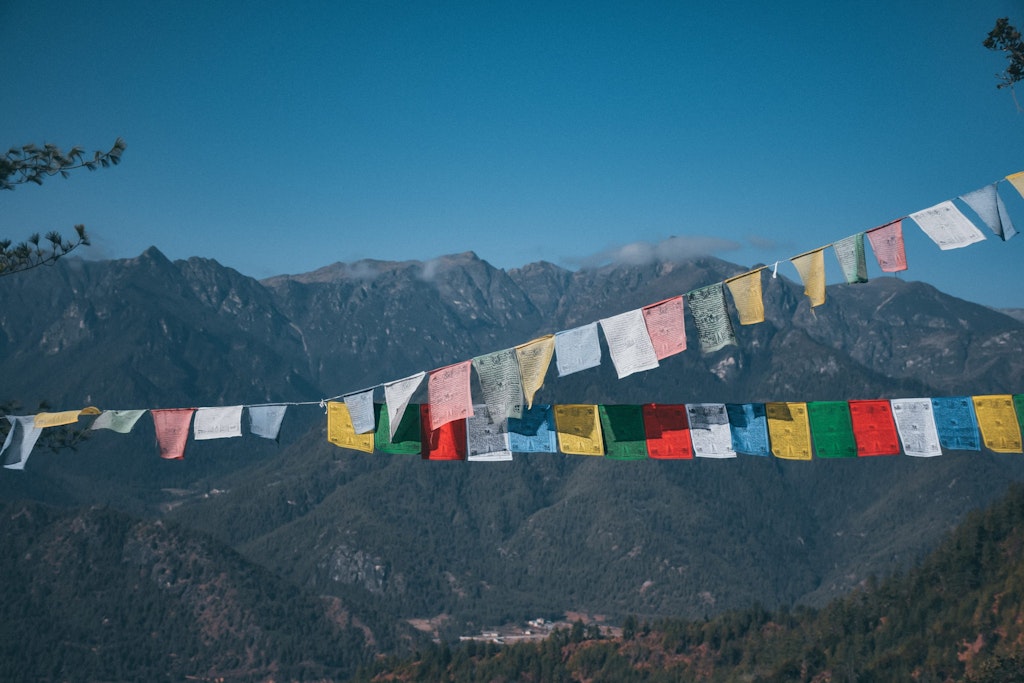Known as “The Last Shangri-la”, the Kingdom of Bhutan is the bustle of the ancient Buddhist cultural riches of South Asia. Here people mostly follow Vajrayana Buddhism. This little kingdom of the Himalayas is known for its national policies, one of which may be – “One of the last countries to introduce television to its people, and later, the Internet.“

Overview
Bhutan (Dzongkha: འབྲུག་ ཡུལ་) is a small nation, with no access to the sea located at the eastern end of the Himalayas. Surrounded by China in the north and India in the south, east and west, the Bhutanese culture is also inspired by its neighbours. Here people value their customs and arts very expensive, therefore, the protection of ancient artefacts, traditions and culture is very practised and followed religiously.
In 1865, Great Britain and Bhutan signed the Sinchula Treaty, under which Bhutan would receive an annual subsidy in exchange for transferring some border land to British India. Under British influence, the monarchy was established in 1907.
~ CIA Fact-book
The Origin of Druk
The Druk (Dzongkha: འབྲུག་) is known as the “Thunder Dragon” in Bhutan mythology and is widely used in a symbol for many national causes. A Druk appears on the flag of Bhutan, national emblem and has many other representations. In their native dialect, they are referred to as Druk Yul Bhutan, or Land of Druk, and the leaders of Bhutan as Druk Gyalpo.
Most of Bhutan’s exported products bear the same badge, therefore, which facilitates the identification of Bhutanese products. Bhutan’s national anthem, Druk Tsendhen, translates into English as “The Kingdom of Druk.“
Druk Path Trek
The Druk Path Trek is a cultural tour of the greater Bhutan. One of the shortest routes in the region, the Druk trek compromises the traditional route used by the first inhabitants of Bhutan. You also have the opportunity to visit Lhakhang, Dzongs and ethnic villages.

The trek starts and ends in Paro. It is a fairly easy walk to do since rest camps are available over shorter distances. The trail takes you through blue spruce pine forests and dwarfs rhododendrons at altitudes ranging between 2,400-4,200 m.
After arriving in Thimphu, you can enjoy seeing the impressive Tashichoedzong, the ancient summer capital of Bhutan. It also offers stunning views of Mount Gangkar Puensum 7,570 m (24,836 ft).
Bhutan tour can be done in two different seasons; Before-monsoon (March-June) and After-monsoon (September-November), when the sky is clear and the days are warm. Tourists mainly avoid travelling Bhutan during summer/monsoon.
A Typical Itinerary of Druk Path
Day 01: Arrival at Paro 2,250 m (7,382 feet)
Day 02: Explore Paro
Day 03: Trek from Paro – Yili Dzong 3,480 m (11,415 feet)
Day 04: Trek to Jangchulakha 3,770 m (12,365 feet)
Day 05: Trek to Jimgelan Tsho 3,880 m (12,729 ft)
Day 06: Trek to Simkotra Tsho 4,110 m (13,480 ft)
Day 07: Trek to Phajoding
Day 08: Trek to Thimphu (ends trek) and return to the hotel
Day 09: Thimphu S / s, and in a car to Paro
Want to travel to Bhutan? Leave us an inquiry.
Getting In
Visas are issued on receipt of full payment of your holiday by the Tourism Council of Bhutan.
The total cost for a Bhutanese visa would be generally about 250 USD per day which includes accommodations, transportation, meals, plenty of bottled water and special entry fees.
The Daily tariff covers
- A minimum of 3-star accommodation – Luxury hotels may incur an additional fee
- All meals – Breakfast, lunch, dinner
- A licensed Bhutanese Tour Guide for the extent of the stay
- All internal transport – excluding any internal flights
- Camping equipment and haulage for trekking tours
- All internal taxes and charges
- A royalty of $65 (which is included in the tariff price)
Paro International Airport is the only entry point to Bhutan by air. It is located 6 km from Paro on the bank of the river Paro Chhu.
Note: Make a pre-arrangement with an approved tour operator, either directly or through an overseas agent as Foreigners are restricted to travel by themselves in Bhutan.
General Packing List during your trek to Bhutan
- Choose lightweight quick-dry clothing.
- Carry light and small Thermal underclothes due to cold in the mountains even in summer.
- Instead of carrying your documents such as boarding passes and other documents you can store it in your smartphones or other electronic devices.
Things to Keep in Mind During Your Bhutan Trip
- Shorts are not allowed (except trekking/hiking). Shoulders and legs should be covered all the time or else you will be restricted from entering into religious buildings and monasteries. (applies for both men & women)
- The sale of tobacco products is banned and smoking in public areas is an offence punished with fines.
- All personal videos, cameras, personal computers, portable telephones or any other electronic device should be registered with the customs authorities on arrival in Bhutan and will be checked again on departure.
- Always pass mani stones, stupas and other religious objects with your right side nearest to the object, and turn prayer wheels in a clockwise direction. Never sit on mani stones or stupas.
5 Fun-Filled Activities In Bhutan
1. Archery: Archery is Bhutan’s national sport, and you can see noisy competitions held throughout the country.
2. Biking: It’s usual at Bhutan to see the king riding his bike across the Thimpu Hills. Hit the road, conquer the challenging pass with a biking tour in Bhutan.
3. Festivals: Immerse in rich(in the rich) culture and tradition of Bhutan with Tshechus. A Tshechu is a festival celebrated on the 10th day of a lunar month in the honour of Padmasambhava or Guru Rimpoche. It is believed that those who watch a Tshechu are said to earn merit, have great luck and are satisfied with their wishes.
4. Hot Stone Bath: Who doesn’t like to get pampered with a hot stone bath especially after a tiring trek? Take a traditional bath in a hot stone in Bhutan. Immerse in the wooden or stone tubs which are head by hot stone slabs. A hot stone bath is a traditional Bhutanese practice with medicinal benefits.
5. Ceremonial Buddhist Weddings: Bhutanese wedding is more than just a simple exchange of vows & ring, its the celestial union of mind, body and soul of two individuals.



